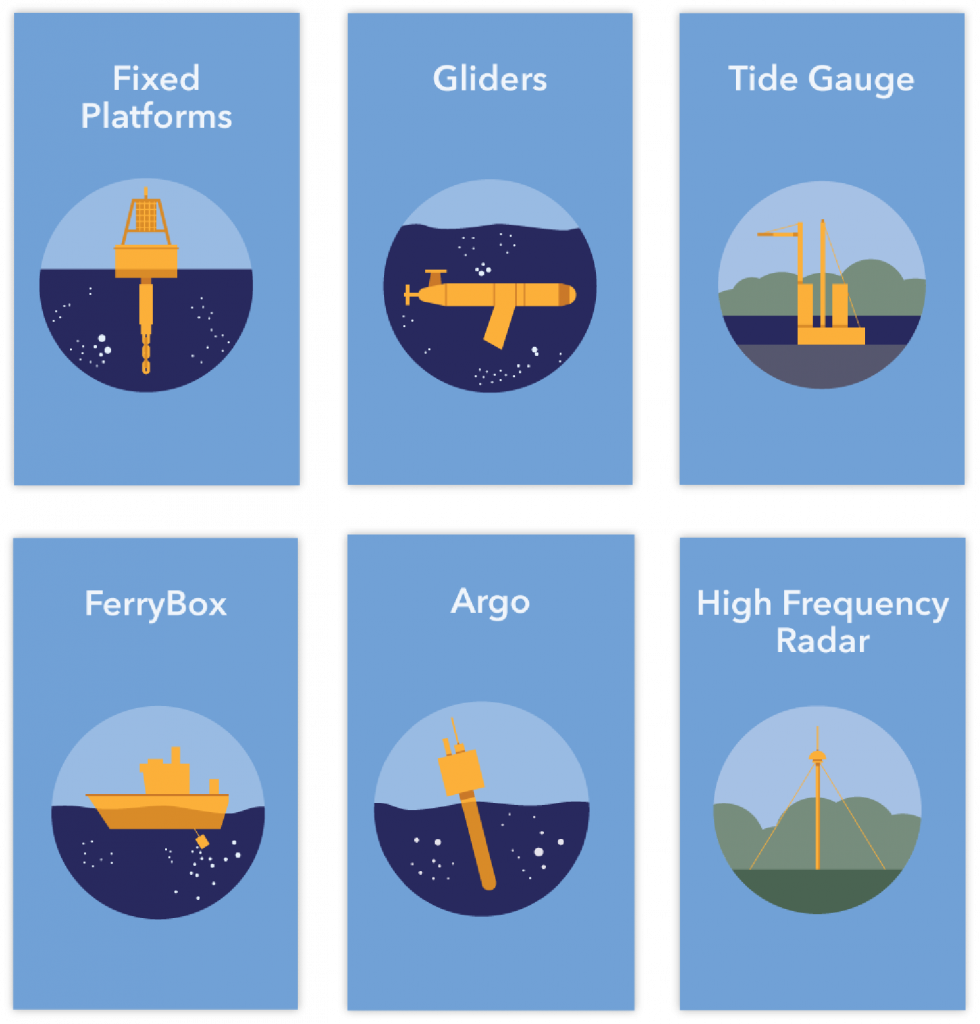 Along with the ROOSes, and its Working Groups, EuroGOOS also maintains a number of operational Task Teams which oversee the technical networks of ocean observation platforms throughout Europe.
Along with the ROOSes, and its Working Groups, EuroGOOS also maintains a number of operational Task Teams which oversee the technical networks of ocean observation platforms throughout Europe.
The Task Team for the FerryBox programme is perhaps the team with the longest evolutionary lifespan. This initiative can be traced back to an EU-funded project with an initial timeframe running from 2002 to 2005, which after a successful rollout grew into a sustained initiative of cooperation between the original partners and some new contributors.[i] FerryBox oversees the installation of mass-produced standard oceanographic instrument packages on commercial ferries and other ships-of-opportunity, contributing to a “cost-effective extension” of the European ocean observation network, exploiting existing resources to their fullest in a manner congruent with the architecture and principles of EuroGOOS.[ii] This is an example of project-based work harnessed to the ends of sustained ocean observing, complementing the organisation’s long-term goals.
Task Teams which are instituted to oversee the management of ocean observing structures which are only in their relative infancy like the FerryBox was in the 2000s can have a simpler job than a team working on a technology with a long operational history, such as fixed platforms, which have been in use in a wider variety of situations and frameworks over the years, and require much greater labour to harmonise due to the fragmentation and variation this introduces.[iii] The other current Task Teams –the Tide Gauge Task Team, the Glider Task Team, the High Frequency Radar Task Team, the Argo Task Team, and the Fixed Platforms Task Team- are working in this way, to harmonise to the best of their abilities the functioning of pre-existing oceanographic instrument networks.
Working from a relatively clean slate can also cause problems, however. An attempt was made to set up an Animal-Borne Instrument Task Team following the 2016 General Assembly of EuroGOOS.[iv] This proved unsuccessful as these technologies were not in sufficiently widespread use throughout the member base to allow the Task Team to form a functional network of operations.[v]
|
Task Team |
Year of establishment |
Purpose |
|
FerryBox Task Team |
2015 |
Coordinating and optimising the European network of FerryBox monitoring platforms on ships-of-opportunity. |
|
Tide Gauge Task Team |
2015 |
Coordinating and developing the European tide gauge network, managing sea level data and associated systems. |
|
Gliders Task Team |
2015 |
Management and optimisation of European underwater glider activities. |
|
High Frequency Radar Task Team |
2015 |
Developing and coordinating a European High Frequency radar network. |
|
Argo Task Team |
2015 |
Integration of the Euro-Argo ERIC into the EuroGOOS framework, representing non-ERIC members in relation to Argo. |
|
Fixed Platforms Task Team |
2016 |
Coordinating and developing fixed platform in-situ observation. |
[i] (2007). FerryBox: From On-Line Oceanographic Observations to Environmental Information. p. 2
[ii] (2007). FerryBox: From On-Line Oceanographic Observations to Environmental Information. pp. 1-2
[iii] Petihakis, George. Interview.
[iv] https://eurogoos.eu/current/eurogoos-2016-general-assembly-main-outcomes/
[v] Petihakis, George. Personal Correspondence.















































